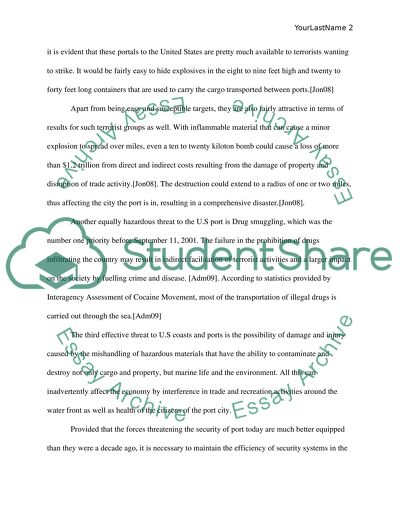Cite this document
(“Homeland Security for the Port of Baltimore Essay”, n.d.)
Retrieved from https://studentshare.org/history/1398192-homeland-security
Retrieved from https://studentshare.org/history/1398192-homeland-security
(Homeland Security for the Port of Baltimore Essay)
https://studentshare.org/history/1398192-homeland-security.
https://studentshare.org/history/1398192-homeland-security.
“Homeland Security for the Port of Baltimore Essay”, n.d. https://studentshare.org/history/1398192-homeland-security.


